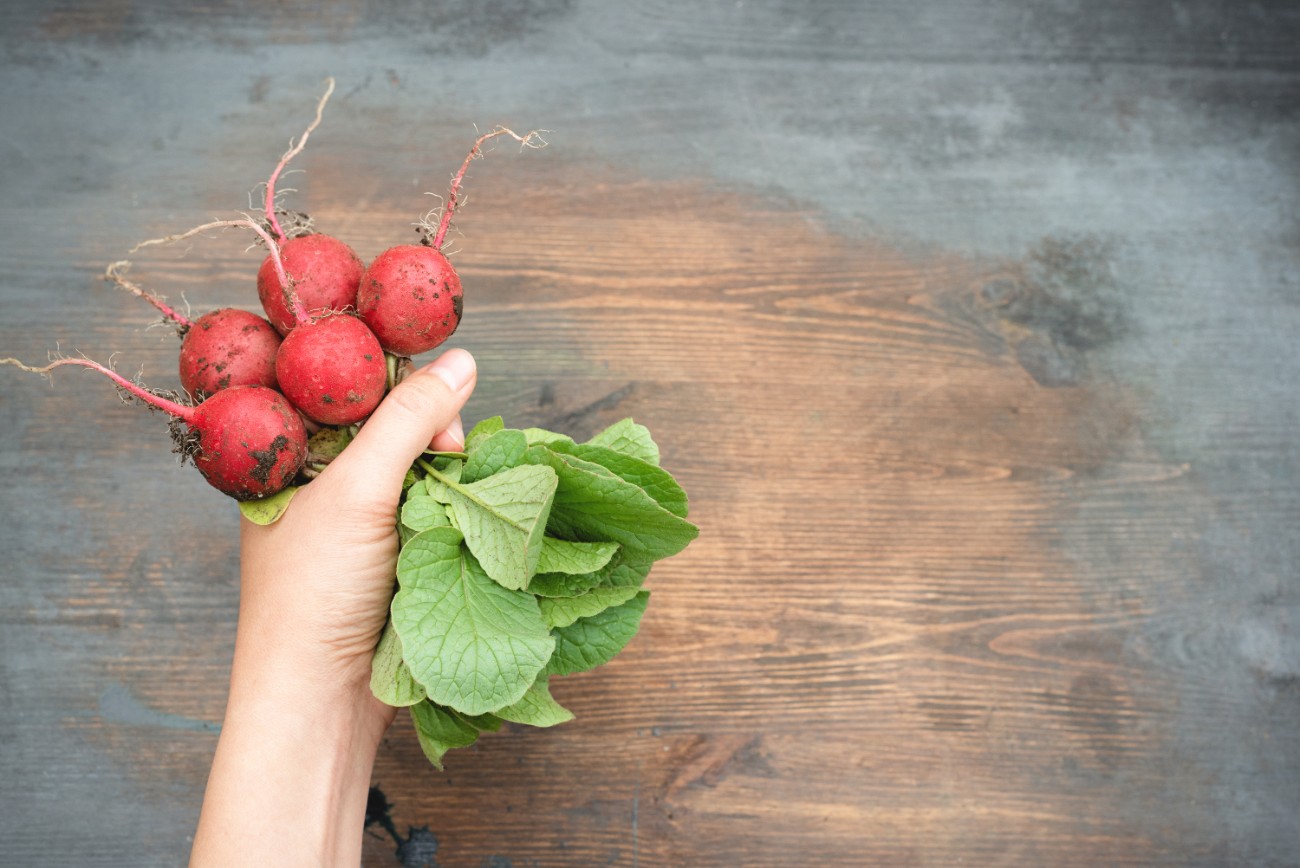The most popular hobby in the U.S. is gardening. About one in three households grow food at home, and it’s seemingly becoming more popular each year.¹ If you’re looking to grow fruits and vegetables yourself, there are tons of resources and methods to help you out. It’s not as intimidating as you might think, and you can quickly begin a gardening routine that will provide you with fresh goods year-round.
By following simple steps, you could be eating foods grown straight from your backyard after a few months. Many foods are easy to grow, and there are plenty of health benefits that come with starting your own garden.
 Happy_Nati / Shutterstock
Happy_Nati / ShutterstockHere are the basics of growing your own food.
Starting A Home Garden
If you don’t already have a garden, then it’s important to take your time by preparing a proper bed for your future crops. First, decide where you will grow the plants. Start small by choosing a smaller plot size. This will make sure you don’t risk growing too much or producing a bigger garden than you can handle.
Choose a spot that will get lots of sun. Vegetables and herbs need at least six to eight hours of direct sunlight everyday.² Avoid shady places in your garden where trees, shrubs or fences can block your garden from getting much-needed sunshine. It should also be an accessible spot where your hose or sprinkler system can reach for easy watering.
If you don’t have lots of yard space or prefer not to work on the ground, consider gardening with a raised bed or container garden.³ This gives you the freedom to garden from the comfort of your deck and eliminates the need to dig up your backyard.
You’ll need to gather some tools to keep your garden well kept. Here are five⁴ to have on-hand:
- Trowel – helps complete everyday tasks like digging, transplanting seedlings, digging weeds, etc.
- Pruning shears – for harvesting fresh produce
- Hose/watering can – to keep your plants well hydrated
- Garden rake – used to level soil and remove unwanted weeds
- Angled shovel – shovels with a triangular shaped head can help you dig holes, move soil and relocate plants
Look for soil that’s rich in nutrients so your plants are well fed. After preparing your garden and gathering all necessary materials, it’s time for you to decide what fruits and vegetables you want to grow.
Easy Fruits And Vegetables To Grow
Some foods are easier to grow than others. If you’re just starting out, there are plenty of low maintenance options that are less intimidating. Make sure to choose fruits, vegetables and herbs you’ll be sure to enjoy.
Timing is an important part of sowing and harvesting vegetables. That’s why you should know about what is best to start planting during the cool and hot seasons. Understanding when to plant specific foods will ensure you get the best product once it’s ready to harvest.
Cool season crops mature as the weather is cooler, when the soil and air temperatures are 40ºF.⁵ Depending on the climate where you live, you might be able to plant in the fall, early spring and winter. Some easy crops to grow during cool season include:
- Carrots
- Chive
- Garlic
- Onions
- Beets
- Kale
- Potatoes
- Radish
Hot season crops require lots of sun and high daytime temperatures to thrive.⁶ Some easy crops to grow during warm season include:
- Zucchini
- Radish
- Beans
- Tomato
- Strawberry
- Squash
- Melons
- Cucumbers
All foods are different, which is why it’s important to do your research and understand when it’s best to plant something in accordance with your location’s climate. Once you develop a plant schedule, you’ll know when it’s time to sow, plant and harvest your garden’s goods.
Take Advantage Of The Health Benefits
Growing your own food has its advantages. It requires physical labor that can get you moving and burn some calories as you tend to your garden. Being outside also means absorbing more vitamin D, a nutrient that can help you maintain healthy bones and muscles.⁷
Gardening has also become a form of therapy for people struggling with their mental health. Being in a green space can help you relax and reduce stress levels.⁸ Growing and keeping plants healthy can also give people a sense of purpose and something to look forward to everyday.
Since you’re growing healthy foods, your diet can become a lot healthier. You’ll be implementing home grown fruits and veggies into your diet that come straight from the backyard. You can learn more about gardening and keeping a growing schedule online. There are tons of articles and videos you can watch that will help graduate you from beginner status into a certified green thumb.